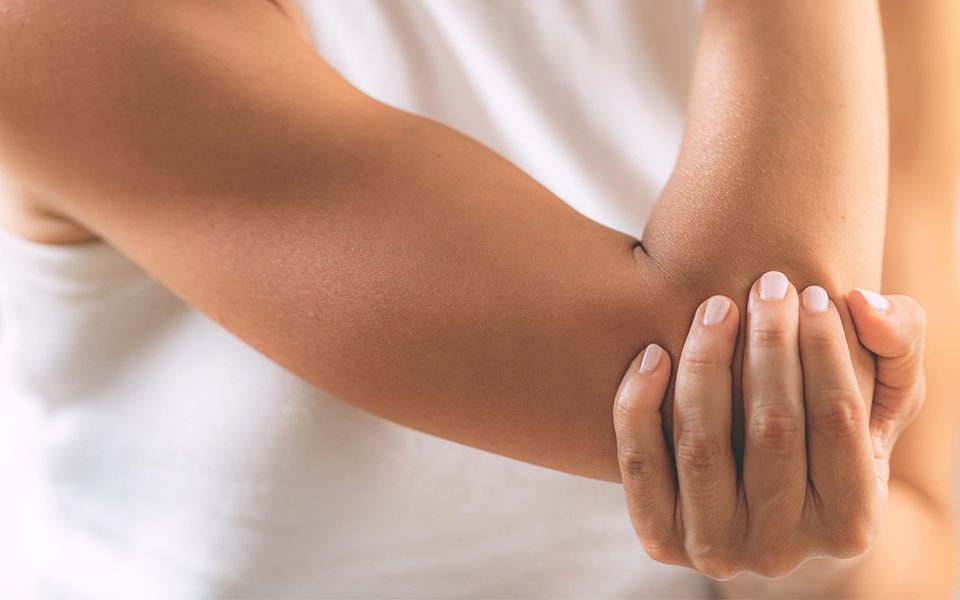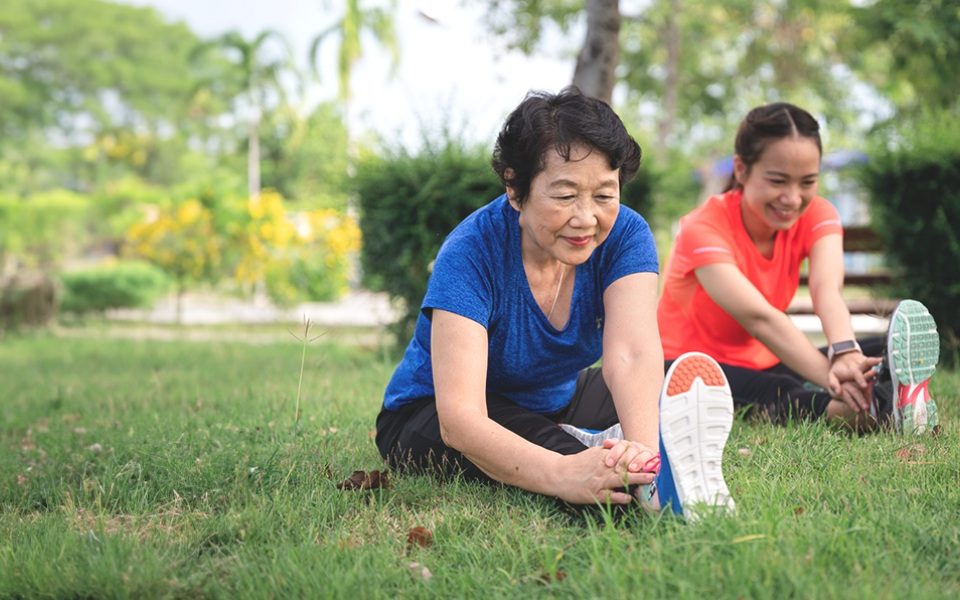Slipped Disc Treatment and Prevention
by: Amanda Chua, TCM Physician, Regis Wellness
Last updated: November 29, 2025
A slipped disc, also known as a herniated disk, is the most common cause of neck, arm, back or leg pain. It is estimated that 2% of people get a slipped disc annually. Slipped discs are most common among those aged between 30 to 50. Men are also twice as likely to get a slipped disc in comparison to women.
Slipped Disc in Singapore
Likewise, a slipped disc is one of the most common back problems faced by Singaporeans.

Manage your slipped disc at Regis Wellness
High quality, effective, holistic treatments
What is a Slipped Disc?
Our spine is made up of 24 bones known as vertebrae. Between each vertebra is a small disc that helps to absorb shock, as well as allowing your spine to bend and move. A slipped disc happens when the soft part of the disc protrudes or bulges out from the disc. This can happen anywhere along the spine, causing pain to your neck, arm, back or leg, depending on where the slipped disc is located.
Symptoms of a Slipped Disc
Symptoms of a slipped disc usually include pain, depending on where along the spine the slipped disc has occurred and whether the slipped disc is pressing against a nerve. Symptoms of a slipped disc can include:
- Sharp or burning pain. The location of the pain will depend on where the slipped disc has occurred.
- Numbness or tingling. If your slipped disc is pressing against a nerve, you may experience numbness or tingling.
- Muscle weakness. The pressure put against your nerves by the slipped disc may cause the associated muscles to be weakened. This can make it difficult for you to walk normally or lift and hold items.
Risk Factors for Slipped Disc
Factors that may increase your risks of developing a slipped disc include:
- Being overweight or obese. This puts more pressure on the spine, especially on the discs in the lower back.
- Occupation. Occupations that require hard labour involving repeated actions such as lifting, pulling, pushing and twisting will increase your risk of developing a slipped disc.
- Gender. As mentioned earlier, men are approximately two times more likely to develop slipped discs compared to women.
- Age. Slipped discs are most common in those aged 30 to 50.
- Smoking. The nicotine in cigarettes can cause blood flow to your spine and spinal discs to be reduced. This results in the spinal discs breaking down at a faster rate.
- Being seated or standing in the same position for prolonged amounts of time.
- Sedentary lifestyle. A lack of regular physical exercise can increase your risk of developing a slipped disc.
Complications of a Slipped Disc
If left untreated, slipped discs can be severe, leading to serious health complications. These include:
- Worsened pain, numbness or weakness. Left untreated, symptoms of pain, numbness or weakness may worsen, affecting your ability to carry out daily activities and causing a loss in quality of life.
- Chronic pain. Depending on where the slipped disc is located, it can cause you chronic pain due to nerve compression. For example, nerve compression in the lower back can lead to chronic sciatica, a type of pain starting in the lower back that radiates towards the leg and foot due to a pinched sciatic nerve.
- Loss of bladder and bowel control. A slipped disc can put pressure on the nerve roots at the end of the spinal cord. This is known as Cauda equina syndrome. If these nerves remain compressed for a long period of time, your ability to control your bladder, bowel and legs may be affected. This can lead to permanent damage to the nerves as well as a loss of bladder and bowel function.
- Saddle anesthesia. Saddle anesthesia refers to a condition where a loss of sensation of the inner thighs, the back of your legs, and around your rectum is experienced. This is caused by a compression of the nerves as a result of your slipped disc.
Diagnosing a Slipped Disc
To diagnose a slipped disc, your doctor will first carry out a physical examination to find out the cause of your pain and discomfort. Your reflexes, muscle strength, ability to walk and ability to feel sensations will also be assessed if required. Your doctor will also go through your medical history and your symptoms.
For an accurate diagnosis, imagining tests for your bones and muscles may be required. These include:
- X-rays. Normal X-rays are unable to detect slipped discs, but can be used to check for other possible causes for your back pain.
- Magnetic Resonance Imaging (MRI) Test. An MRI can be used to pinpoint the location of a slipped disc as well as the affected nerves. An MRI uses radio waves and a magnetic field to create detailed images of the body’s internal structures.
If nerve damage is suspected, nerve tests may be required. These include:
- Nerve conduction study. Electrodes are placed on the skin to assess the function of your nerves and search for nerve damage.
- Electromyography (EMG). A needle electrode is used to penetrate your skin into your muscles to evaluate the electrical activity of your muscles when contracted and at rest.
Preventing a Slipped Disc
A slipped disc can happen to anybody and can be unavoidable. However, there are steps that you can take to lower your risks of having a slipped disc injury. These include:
Proper lifting technique
When lifting heavy loads, make sure that you use your leg muscles to assist you instead of straining your back muscles. You can do this by bending your knees and keeping your back straight instead of bending your back while lifting.
Maintaining a healthy weight
Being obese or overweight results in additional strain on your lower back since the weight it needs to support is heavier. A healthy body mass index (BMI) ranges between 18.5 and 24.9.
Exercise regularly
Exercising regularly not only helps to keep your weight in a healthy range but also strengthens your back and abdomen muscles. These muscles are crucial in supporting your spine by taking off the strain from your spine.
Quit smoking
The nicotine from cigarettes reduces the blood flow to your spine, weakening your spinal discs and increasing your risk of developing a slipped disc. By quitting smoking, you can improve the health of your spinal discs.
Stretching regularly
Sitting down for extended periods of time can be detrimental to your spinal discs. Standing up to stretch your back regularly can help to reduce stiffness and relieve pressure on your spine.
Keeping good posture
Good posture is crucial to the health of your spine. Be it walking, sitting or standing, you should try to adopt good posture so that your spine is not under additional strain as a result of compensating for your poor posture.
Treatment Methods for a Slipped Disc
Conservative treatment methods usually fare well for slipped discs. Medication and physiotherapy can be used to manage slipped disc pain when necessary. In rare cases where the slipped disc is causing severe issues, surgery may be required to improve your symptoms.
Medication
Pain medication. For mild to moderate pain, pain medication that can be acquired without a prescription may be sufficient to alleviate your symptoms. These include drugs such as:
- Acetaminophen
- Ibuprofen
- Naproxen Sodium
- Etoricoxib
Neuropathic drugs. These drugs relieve pains symptoms by suppressing nerve impulses. These include drugs such as:
- Gabapentin
- Pregabalin
Muscle relaxants. Muscle relaxants may be prescribed if you experience muscle spasms as a result of your slipped disc.
Surgery
In rare cases, a slipped disc may require surgery. The surgeries required for each individual case will depend on where the slipped disc has occurred, its severity and its impact on the rest of your body. A combination of surgeries may be required as well.
Laminotomy/laminectomy
During a laminotomy, an opening in your vertebral arch (lamina) is made so that the pressure on the roots of your nerves can be relieved. If required, the entire lamina may be removed. This is known as a laminectomy.
Discectomy/microdiscectomy
During a Discectomy, your surgeon will remove the part of the herniated disc that is putting pressure on your nerve root. In some cases, the entire disc will need to be removed. The size of the incision that has to be made will depend on your condition. Microdiscectomy refers to a minimally invasive form of discectomy, where a very small incision is made.
Artificial disc surgery
This surgery is used to replace one damaged disc in the lower back. The damaged disc is replaced with an artificial disc via an incision in your abdomen. This surgery may not be suitable for everyone. If more than one of your discs show degeneration, or you have arthritis or osteoporosis, artificial disc surgery will not be suitable for you.
Spinal fusion
Spinal fusion is a surgery where two or more vertebrae are permanently fused together. Bone grafts are used to maintain the right height between the bones.
Physiotherapy for Slipped Disc
Physiotherapy is one of the most effective non-surgical treatments for a slipped disc. A physiotherapist will develop a personalised exercise and rehabilitation program tailored to your symptoms, spinal condition, and overall mobility. Treatment aims to relieve nerve compression, stabilise the spine, strengthen supporting muscles, and restore your ability to perform daily activities without pain or reduced quality of life.
Strengthening exercises reduce pressure on the affected disc, while flexibility work improves spinal mobility and helps prevent future disc injuries. Your rehabilitation program will begin with gentle exercises to ensure safety and avoid aggravation, then gradually progress as your strength and tolerance improve. Many exercises can eventually be performed at home once mastered under supervision.
Physiotherapy for slipped disc typically progresses through the following treatment focuses:
- Pain Relief, Nerve Decompression & Early Mobility Phase
- Manual therapy including spinal mobilisation and soft tissue release to reduce pressure on the compressed nerve
- Hot and cold therapy to ease inflammation, stiffness, and muscle guarding
- TENS therapy to reduce nerve pain and modulate discomfort
- Ultrasound therapy to promote tissue healing and reduce inflammation around the affected disc
- Gentle range-of-motion exercises to maintain mobility without aggravating the disc
- Education on posture, safe sitting/standing positions, and activity modification to reduce nerve irritation
- Strengthening, Spinal Stabilisation & Flexibility Phase
- Core strengthening exercises to stabilise the spine and reduce pressure on the discs
- Back and hip muscle strengthening to support proper spinal alignment
- Stretching exercises for hamstrings, hip flexors, and the lower back to improve flexibility and reduce nerve tension
- Postural correction training to improve spinal alignment and reduce loading on the lumbar discs
- Functional movement training to improve bending, lifting, and transitioning techniques safely
- Advanced Conditioning, Functional Training & Recurrence Prevention Phase
- Progressive strength and conditioning to improve long-term spinal resilience
- Gait retraining to correct compensations caused by pain or nerve irritation
- Dynamic stability exercises such as controlled rotational movements and balance training
- Home exercise programs for ongoing spinal care and maintenance
- Long-term ergonomic and lifestyle guidance to prevent recurrent disc injuries or nerve compression
With consistent physiotherapy, most individuals experience reduced nerve pain, improved spinal mobility, and a gradual return to normal daily activities without fear of re-injury. Our physiotherapist will adjust your program as you progress to ensure safe, effective recovery.
TCM for Slipped Disc
Traditional Chinese Medicine (TCM) offers a holistic approach to managing slipped disc–related back pain by addressing both symptoms and underlying imbalances in the body. Treatments focus on regulating Qi and blood flow, relaxing tight muscles, reducing pain, and supporting the body’s natural healing processes.
TCM can be used on its own or alongside physiotherapy as part of a comprehensive back pain management plan, such as those outlined in your integrated TCM and physiotherapy back pain treatments. Treatment is individualised based on the nature of the slipped disc, severity of symptoms, and the patient’s overall health and constitution.
TCM approaches for slipped disc typically focus on the following treatment areas:
- Pain Relief, Muscle Relaxation & Inflammation Reduction
- Acupuncture is used to stimulate specific points along the meridians to promote the flow of Qi and blood, helping to relieve pain, calm irritated nerves, and reduce inflammation around the spine.
- Cupping therapy may be applied along the back and surrounding muscles to increase local circulation, release muscle tension, and ease stiffness that can aggravate slipped disc symptoms.
- TCM treatment plans for pain often form part of broader TCM pain relief strategies, helping to reduce reliance on long-term pain medication where appropriate.
- Circulation, Tissue Healing & Structural Support
- TCM herbal medicine may be prescribed to nourish the muscles and tendons, support circulation, and address internal imbalances contributing to back pain, such as weakness of the Kidney and Liver systems in TCM theory.
- Herbal formulas may include herbs with anti-inflammatory, analgesic, and tissue-supporting properties to assist with healing and reduce recurring flare-ups.
- Long-Term Balance, Prevention & Integration with Rehabilitation
- Follow-up acupuncture and herbal support may be used at longer intervals to maintain pain control, support spinal health, and reduce the likelihood of future flare-ups.
- Our TCM practitioner may provide lifestyle and dietary advice based on TCM principles, such as keeping the lower back warm, avoiding excessive strain, and choosing foods that support circulation and energy.
- TCM care can complement physiotherapy and strengthening programs, helping patients better tolerate rehabilitation exercises and supporting a more complete, holistic recovery from slipped disc–related back pain.
Our TCM practitioner will assess your condition, pattern of imbalance, and response to treatment over time, adjusting acupuncture points, herbal formulas, and cupping techniques as needed. When combined with appropriate medical and physiotherapy care, TCM can play a valuable role in managing pain, improving mobility, and supporting long-term spinal health in patients with slipped discs.
Disclaimer:
The information on this website, including but not limited to, text, graphics, images, videos and all other materials contained on this website is for informational purposes only. None of the material is meant to replace a certified and registered Doctor's professional medical advice, diagnosis, and treatment.
No warranties or representations are given in respect of the medical information. Regis Wellness, Regis Wellness’s staff, and the website's operator will not be held liable if a user suffers any injury or loss after relying upon the medical information on this website.
Any devices used for technology-enhanced therapies are intended for use only for general well-being purposes or to encourage or maintain a healthy lifestyle and is not intended to be used for any medical purpose (such as the detection. diagnosis, monitoring, management or treatment of any medical condition or disease). Any health-related information provided by this device or software should not be treated as medical advice. Please consult a certified and registered Doctor for any medical advice required. As with all medical conditions, there are exceptions and nuances to individuals’ condition and treatment modalities. We aim to provide only a general understanding for each section.
Barrell, Amanda. “Safe Exercises for a Herniated Disk.” Herniated Disk: 6 Safe Exercises and What to Avoid, MedicalNewsToday, 11 Mar. 2021, https://www.medicalnewstoday.com/articles/324311.
Cheong, Teresa. Is a Slipped Disc Giving You Neck or Back Pain?, HealthXchange, https://www.healthxchange.sg/bones-joints/back-spine/slipped-disc-giving-neck-back-pain.
Deng, Rong et al. “The effectiveness and safety of acupuncture in the treatment of lumbar disc herniation: Protocol for a systematic review and meta-analysis.” Medicine vol. 99,12 (2020): e18930. doi:10.1097/MD.0000000000018930
“Herniated Disc (Slipped Disc).” HealthHub, Khoo Teck Puat Hospital, 18 Dec. 2018, https://www.healthhub.sg/a-z/diseases-and-conditions/769/Herniated-disc-ktph.
“Herniated Disk (Slipped, Ruptured or Bulging Disk).” Herniated Disk: What It Is, Diagnosis, Treatment & Outlook, Cleveland Clinic, 7 Jan. 2021, https://my.clevelandclinic.org/health/diseases/12768-herniated-disk.
“Herniated Disk.” Herniated Disk - Symptoms and Causes, Mayo Foundation for Medical Education and Research, 8 Feb. 2022, https://www.mayoclinic.org/diseases-conditions/herniated-disk/symptoms-causes/syc-20354095
Härtl, Roger. “Lumbar Herniated Disc: Causes and Risk Factors.” Lumbar Herniated Disc: Causes and Risk Factors, Spine-Health, 7 June 2016, https://www.spine-health.com/conditions/herniated-disc/lumbar-herniated-disc-causes-and-risk-factors
Nall, Rachel. “Slipped (Herniated) Disc.” Slipped (Herniated) Disc: Symptoms, Causes, and Effects, Healthline Media, 27 Aug. 2020, https://www.healthline.com/health/herniated-disk.
Slipped Disc or Prolapsed Intervertebral Disc, SingHealth, 2021, https://www.singhealth.com.sg/patient-care/conditions-treatments/slipped-disc.
“Slipped Disc.” Slipped Disc - Lower Back - Conditions - Musculoskeletal - What We Treat - Physio.co.uk, Physio.co.uk, https://www.physio.co.uk/what-we-treat/musculoskeletal/conditions/lower-back/slipped-disc.php#:~:text=Physiotherapy%20for%20a%20slipped%20disc%20should%20be%20started%20immediately%20and,of%20movement%20and%20postural%20exercises.


